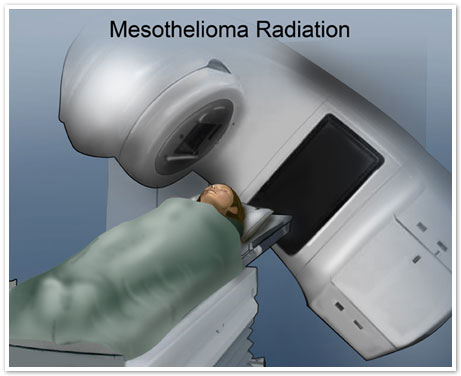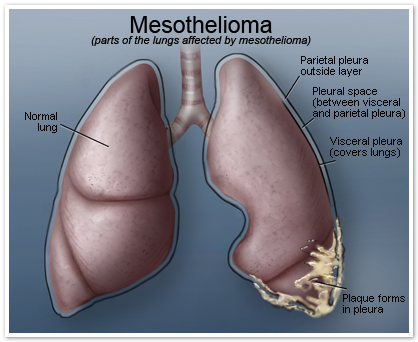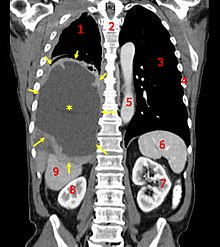If there’s one thing we know about mesothelioma treatment, it’s this: we’re still being challenged to arrive at efficacy.
Despite years of research since the
disease was first identified, it’s still difficult to identify the best approach to treating the disease, says
David Rice, MD, a cardiothoracic surgeon and nationally known mesothelioma expert who practices at the
University of Texas MD Anderson Cancer Center in Houston, TX.
The very rareness of the
cancer—only
about 3,000 people a year are diagnosed in the United States—makes it
difficult to run the kind of research studies needed to compare
treatments and determine the ideal therapy at each stage of the disease.
“There isn’t a lot of evidence-based science in this disease,” Dr. Rice
admits. So when his patients ask him what the best treatment is for the
disease, he tells them what we tell you in this section, adding that
“we don’t have a reliable
cure for this disease.”
Thus, a major goal of treatment is to reduce pain and suffering and
prolong a patient’s life as long as possible while providing them with
the highest quality of life possible.
Choosing the right mesothelioma doctor is an important first step in planning for treatment.
There are a number of mesothelioma experts, like Dr. Rice, practicing
in specialized clinics throughout the country. Each of these cancer
specialists has an acute knowledge of the behavior and pathology of
malignant mesothelioma and its treatment. It is likely that if you are
diagnosed with mesothelioma, you will be referred by your personal
physician to a larger scale
comprehensive cancer center.
The most important consideration in
mesothelioma treatment is the
cancer stage
and type, said Dr. Rice. Treatment decisions also depend on whether the
cancer is localized to the chest or has spread to the chest wall,
diaphragm, or lymph nodes, your age and overall health, and the center
where you’re being treated. Learn more about
finding a doctor here.
Conventional treatments for mesothelioma involve surgery, chemotherapy, and radiation therapy.
As with most solid tumors, doctors turn to
surgery,
radiation and
chemotherapy
to manage mesothelioma. When exploring the various treatment options
available with your doctor it is important to be informed about the risk
and benefits of each one before making a final decision.
Surgery
Only about 1 in 5 patients with
metastatic pleural mesothelioma undergo surgery. There are two main surgeries:
pleurectomy/decortication, in which the surgeon tries to remove as much of the tumor from around the lung as possible, and the more radical
extrapleural pneumonectomy, in which the lung itself is removed.
There is a lot of debate as to which is “best,” said Dr. Rice,
although studies find that most long-term survivors have had surgery. He
personally believes that pneumonectomy is best for tumor control if
followed with radiation. Studies find it prevents tumor recurrence in
the chest in 80 to 85 percent of patients who have the surgery.
However, Dr. Rice noted, it is a long, intensive operation with a 55
percent complication rate and a 3 percent risk of death, higher in some
institutions. “So you only want to perform that surgery if the patient
has a reasonably good prognosis,” said Dr. Rice. Translation: it doesn’t
appear that the cancer has spread outside the chest.
Patients best suited for pneumonectomy are younger, with the
epithelial form
of the disease, no obvious lymph gland involvement, and are otherwise
healthy enough to withstand the rigor of the procedure. Dr. Rice
actually waits until he has the patient’s chest open in the operating
room and biopsies the lymph nodes before deciding which procedure to
perform.
Pleurectomy/decortication has a higher failure rate, with the tumor
recurring in the chest cavity 50 to 80 percent of the time. However,
that rate may change with improved radiotherapy techniques, Dr. Rice
said. The reason for the high recurrence is that it’s impossible to
completely remove the tumor without removing the lung.
However, he noted, there is no difference in survival rates between
the two surgeries. Part of the reason is that the cancer has often
spread to other parts of the body by the time it is
diagnosed even if it appears to be confined to the chest.
Chemotherapy
Chemotherapy, also known as systemic therapy, uses oral or
infusion-based medications to kill cancer cells throughout your body.
Chemotherapy is used both before and after surgery, as well as in people
who can’t handle surgery. It is also used in the
palliative setting to reduce pain and improve quality of life.
The most commonly used chemotherapy drugs for mesothelioma are
cisplatin combined with
pemetrexed (Alimta) or raltitrexed (Tomudex). Other combinations include
gemcitabine,
carboplatin or oxaliplatin.
If you can’t manage combination therapy, your doctor may start on
just one drug. Sometimes, your doctor may infuse the medication directly
into your chest cavity, a procedure called pleural chemotherapy, or,
abdomen, called intraperitoneal chemotherapy. You may also get a second
course of chemotherapy, called “second-line” chemotherapy, with
pemetrexed or other drugs, raltitrexed plus oxaliplatin, or the triple
drug combination of irinotecan, cisplatin and mitomycin.
Some centers are beginning to provide intraperitoneal chemotherapy
before surgery, followed by chemotherapy shortly after surgery. You can
learn more about this approach here. There is also work underway to
personalize chemotherapy based on the genetic characteristics of your
tumor.
Radiation
Radiation can be an important part of mesothelioma treatment. The
problem is that because the cancer is near the heart and lungs, it’s
challenging to provide the kind of high-dose, intensive therapy needed
to shrink the tumor. However, a newer option, intensity-modulated
radiotherapy (IMRT), which can more accurately target cancer cells and
avoid healthy tissue, may provide better results when performed by
experienced clinicians.
Investigational therapies are being explored through clinical and surgical trials at many of the nation’s top cancer centers.
There are more than 50 studies on new therapies for mesothelioma in
the U.S. that are looking for volunteers. Researchers are investigating
new targeted drugs and chemotherapies, as well as new protocols for
giving the medications; immunotherapy, which harnesses the power of the
immune system to fight the disease; phototherapy, in which you are
injected with a drug that bonds to cancer cells and is activated by
high-intensity light;
genetic therapies; and novel radiotherapy techniques like tomotherapy to treat the disease. Learn more about participating in a
clinical trial here.
At some point, the management of the disease will
shift from trying to cure the disease to trying to keep the patient as
comfortable as possible for as long as possible.
This is the palliative care stage, when many people enter a
hospice
program. The primary goal at this stage is maximizing patient comfort.
Medication to help with pain, difficulty breathing, and other symptoms
that may be experienced is a mainstay. So is emotional and spiritual
support for you and your family.
Alternative therapies for mesothelioma can be used to ease side effects of traditional cancer treatment.
Complementary and alternative medicine (CAM) includes such therapies
as massage, acupuncture, and meditation. They can be a powerful part of
your overall management plan, helping you better manage the stress and
anxiety of the disease and conventional treatments.








